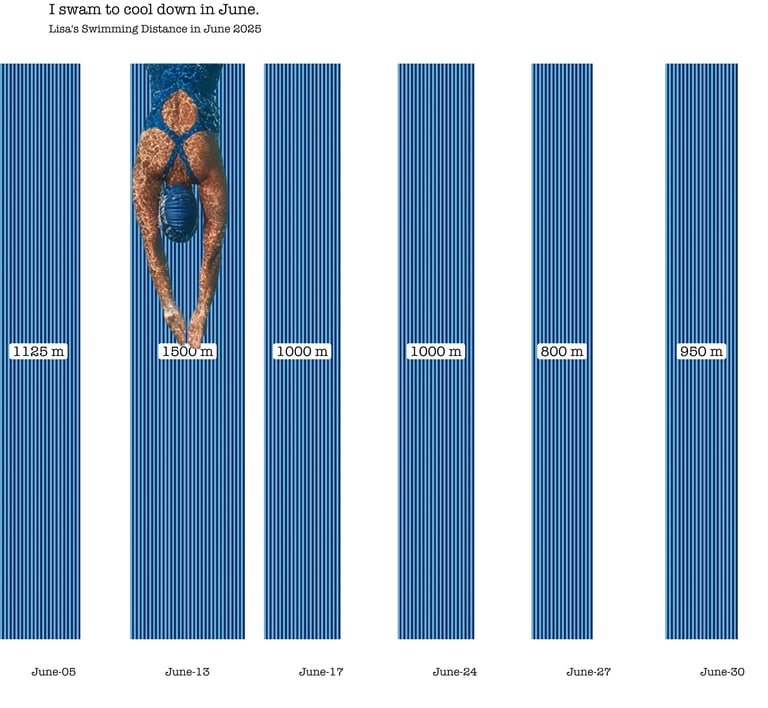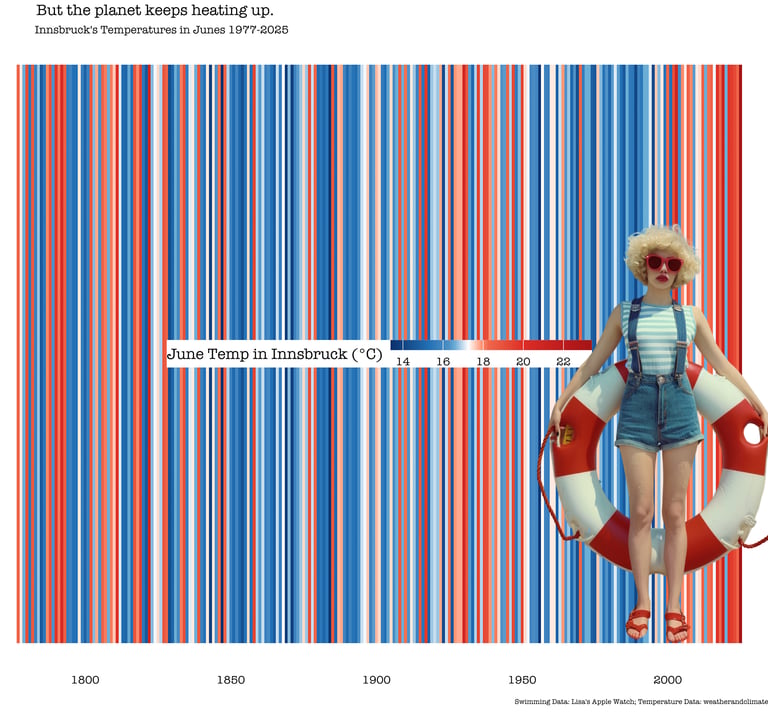We All Need to Cool Down!
This visual story connects personal coping with a bigger truth about the climate crisis. On one side: my swimming distances during Innsbruck’s hot June days. On the other: 200+ years of June temperatures in my city. The message? While we cool down in the moment, the planet keeps heating up. This is the first in a new series exploring what climate action can really look like — beyond panic, beyond paralysis.
Lisa Lechner
7/2/20252 min read


Short-term relief won’t fix long-term heat.
In June, I swam.
I wasn’t training. I wasn’t tracking pace.
I was cooling down — body and mind.
Day after day, the heat kept rising. I needed a break.
So I swam: 1125 meters. Then 1500. Then 1000.
It helped.
But while I cooled off, I kept thinking about something deeper:
The heat we’re feeling isn’t random. It’s not just another hot summer.
The planet is heating up.
And no amount of swimming can fix that.
Cooling down, while everything heats up
It’s easy to slip into coping mode:
Take a swim. Close the curtains. Skip the news.
And for a moment, we feel better.
But the relief is temporary.
And the planet keeps heating.
The temperature history of Innsbruck — where I live — shows that June heat is becoming more frequent, more intense, and harder to ignore. The red stripes pile up. The cooler blues fade away.
It’s no longer just fluctuation. It’s direction.
And it’s not just a global issue. It’s right here, in our neighborhoods, our routines, our bodies.


This is what climate paralysis feels like
We know the climate is changing.
We feel it in the air. We read it in the data.
But we don’t always know what to do.
So we swim. We scroll. We wait for the heatwave to pass.
That quiet stuckness — the space between awareness and action — is what I call climate paralysis.
And right now, it feels more present than ever. Especially when political action is not just slow — but in some places, moving backwards.
We’re not powerless. And this isn’t hopeless.
We need ways to release the heat from our bodies.
But we also need ways to keep the pressure on.
To stay awake, engaged, and connected — without burning out.
This visual marks the beginning of a larger project I’m working on:
a series that explores what we as humans can actually do.
What helps? What matters?
What’s more than distraction?
What’s not too small?
I’ll be sharing data visuals, research, and reflections that go beyond the doom — and into clarity, impact, and emotional truth.
Because if the heat is rising, we need to rise with it.
All visuals and text in this blog post were created by Lisa Lechner.
